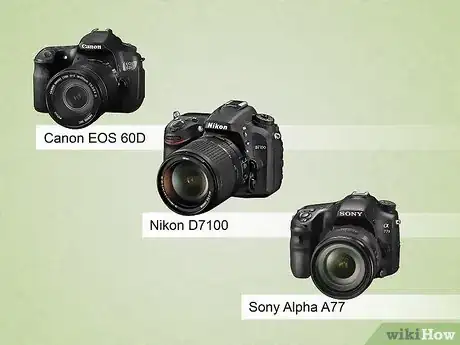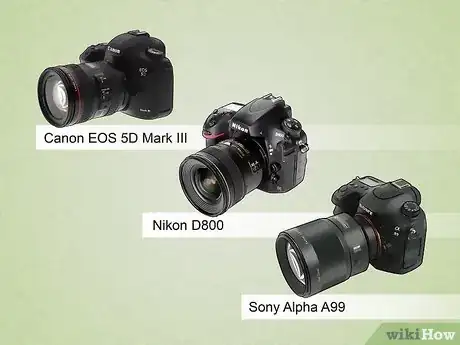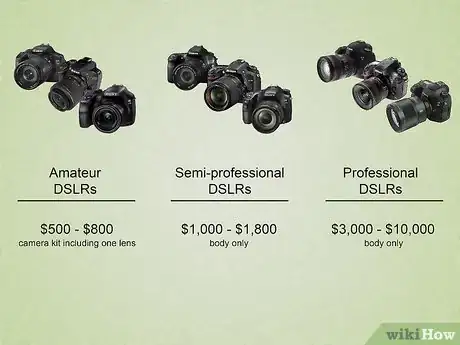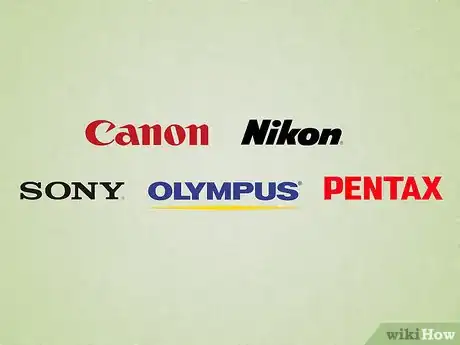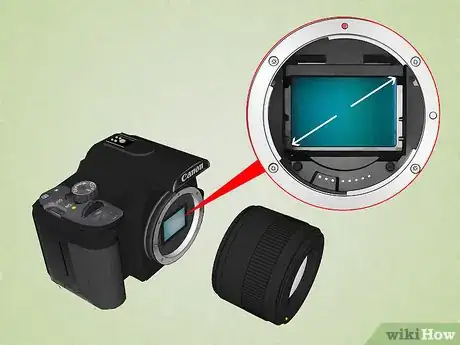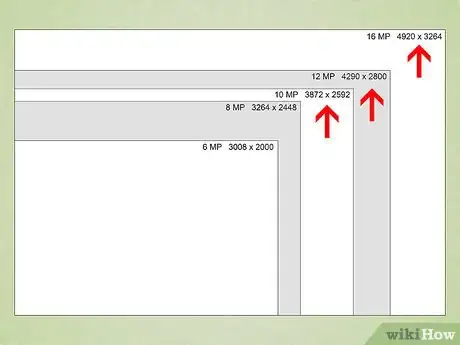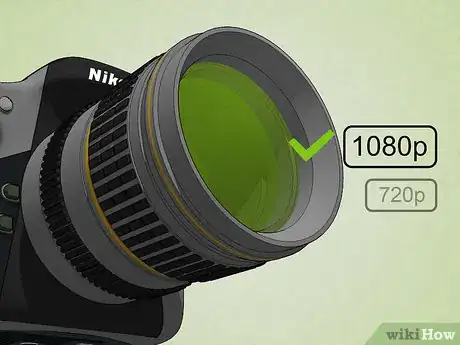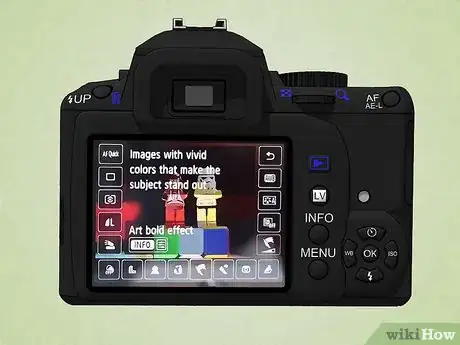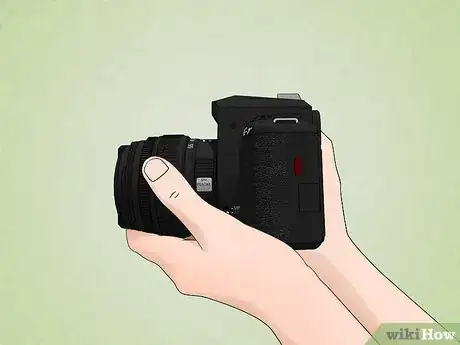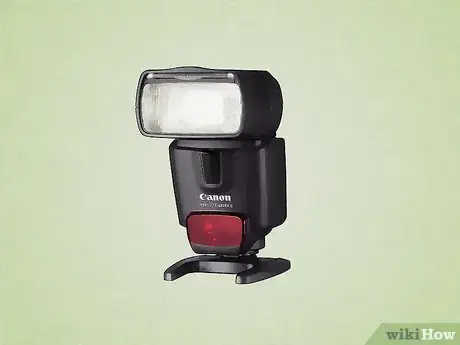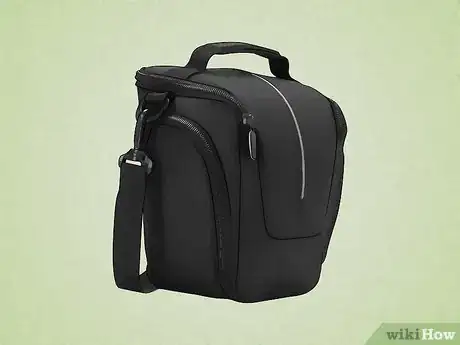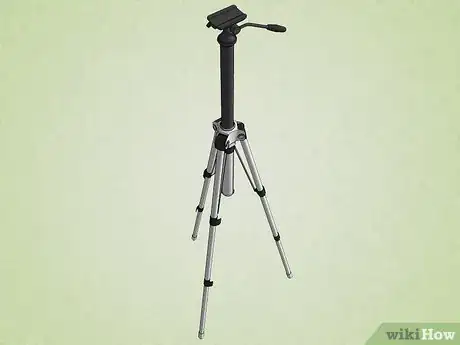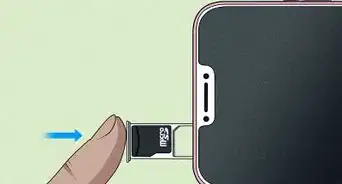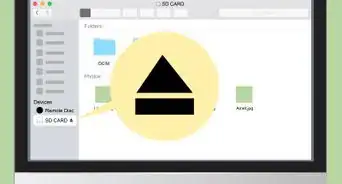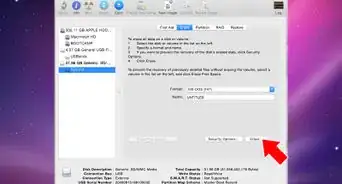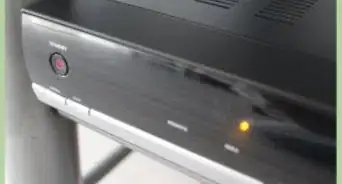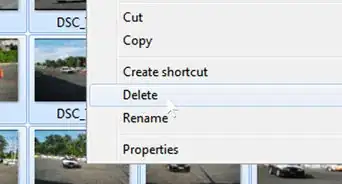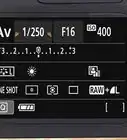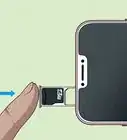This article was co-authored by Stephen Cardone. Stephen Cardone is the COO of NY Headshots, a New York City-based studio that specializes in shooting and producing headshots for individuals and businesses. Stephen has over four years of professional photography experience and over six years of documentary filmmaking experience. Stephen also works extensively as a photographer at NY Headshots. His work includes events, environmental photography, as well as headshots for actors, models, and corporate. He holds a BA in Non-fiction Writing from The New School.
There are 10 references cited in this article, which can be found at the bottom of the page.
This article has been viewed 196,188 times.
You should consider your camera needs, desired features, and potential accessories when thinking about what DSLR camera to purchase. You can also base your DSLR decision around the camera’ features, like sensor size, megapixels, video mode, and shooting modes. Whether you are a professional sports photographer or a mother looking to document the journey of her newborn daughter, a DSLR camera will help you capture beautiful, special moments to share with generations.[1]
Steps
Taking Your Needs into Account
-
1Consider an entry-level, amateur DSLR camera if you are a beginner. Amateur cameras are the easiest to learn and most affordable. If you don't have very much photography experience and are looking for a camera to record your life, capture family memories, or document a vacation, you should go with an amateur level camera.
- Examples of amateur cameras include: T3i, Nikon D3200/D5300, Sony Alpha A3000.[2]
- When you're comparing camera, think about the features you really need. For instance, Canons are well-known for capturing colors very well, Nikon is excellent if you need sharpness and focus, and Sony provides a balance of both at an affordable price range.[3]
-
2Think about a semi-professional camera if you have some photography experience. If you have a middle-range level of photography experience, where you have some understanding of basic amateur cameras but want to try to take your skills to the next level, choose a semi-professional camera. Semi-professional cameras have more complex features, more versatility, and better construction.
- Examples of semi-professional cameras include: Canon EOS 60D, Nikon D7100/D300s, Sony Alpha A77.[4]
Advertisement -
3Buy a professional camera if you are looking to do advanced photography work. If you are looking to learn professional photography or looking to level up your semi-professional camera, select a professional camera. They have the most advanced sensor technology, focus system, construction, and speed.
- Examples of professional cameras include: Canon EOS 5D Mark III/EOS 1D X, Nikon D800/D4, Sony Alpha A99. [5]
-
4Set a budget to spend on your camera. A good DSLR can cost you anywhere from $500 to $3,000 or more, so cap a limit to what you want to spend. Narrowing your focus by sticking with your budget will help you pick out a camera in your price range.
- Amateur DSLRs cost around $500 to 800 for a camera kit including one lens.
- Semi-professional camera bodies alone costs between $1,000 and 1,800.
- Professional DSLR camera body alone is between $3,000 and $10,000.
- Also consider the cost of other camera necessities, like memory cards, batteries, and lenses. These expenses vary based on size and type. Typically, memory cards cost around $50, batteries cost between $40 and $80, and lenses range between $100 and $2,000. [6]
-
5Consider how you'll be using the camera when you compare features. When you're buying a DSLR, you may not always be able to get the very best of every single feature, especially if you're shopping with a budget. Prioritize the features that you'll use the most to get the best value out of your camera.[7]
-
6Decide between DSLR brands based on your personal preference. Mostly all DSLR cameras are sold by either Canon or Nikon. Other brands include Sony, Olympus, and Pentax. All of these brands feature great DSLR options, and the choice mainly comes down to personal preference. Pick camera brand based on which camera has strengths in the areas most important to you, like camera features, appearance, and size.[10]
Deciding on Camera Features
-
1Look for a camera with the largest sensor size within your budget. The camera's sensor helps determine clarity of your photos. Each camera has an image sensor inside, which records the image through the viewfinder and sends it to the memory card. The larger the sensor size, the clearer your pictures will be. “Full frame” or 36mm x 24mm is the largest sensor size. The exact size depends on the model of the camera, though you always want to look for the largest sensor size possible.
- Most amateur and semi-professional cameras have a sensor size of around 22mm x 16mm. [11]
-
2Ensure your camera has at least 10-15 megapixels. Megapixels are the total points of light (pixels) that the sensor receives in order to create the image. Megapixels affect the use of your image rather than image quality. More megapixels means more potential to make the image larger and not lose clarity. Nearly all new DSLR cameras come with at least 10-15 megapixels, and this is adequate for most photography purposes.
- Lenses and sensor quality affect the image itself more than megapixels.
- If you are pursuing professional photography, you may want a camera with 20 or more megapixels for extra potential to blow up your images.[12]
-
3Choose high definition capabilities if you are planning on using your camera to take video. If you plan on using your camera for taking videos, look to see if the video capabilities are in high definition. Many amateur cameras can record in full high definition, with 1080p. Others are non-HD and record in 720p.
- Also look at the different recording frame rates. Higher rates help smooth out motion.[13]
-
4Look for a camera with a variety of modes. All cameras shoot in either “auto” or “manual” mode, and they usually come with different camera modes, such as portrait, landscape, night, indoor, panorama, and action. Review the camera’s shooting modes and select which one offers you the most option for your photography needs.
- If you are not looking to do advanced photography work, the “auto” shooting mode should work just fine. This is where you can access different camera modes like portrait, landscape, and panorama.
- If you want to get more hands-on with your photo settings, look for a camera where you can use “manual” mode to adjust camera specifications, such as aperture and shutter speed. [14]
-
5Choose a camera with internal editing capabilities if you do not have photo editing software. Many amateur cameras include quick editing features to instantly alter your images. You can apply filters, make adjustments, or change the exposure, for example. Photo editing software makes these changes much easier, but using these editing features lessens your reliance on these often expensive programs. [15]
-
6Hold the camera to decide on its body detail and visual appeal. Make note of the quality of camera's body, size, and overall look. Does the camera fit in your hand well? Is the camera too heavy? Do you want the option of a touchscreen for the camera’s view screen? This is more personal preference, but picking up the camera and inspecting it helps ensure you purchase a camera you will love and use often.[16]
Buying Accessories and Tools
-
1Determine the type of lens to add to your camera. Look for a lens where you can zoom in or out with the same lens, as opposed to fixed lenses that do not offer the option to zoom in. Some stores offer camera “kits,” which include lenses and other items for your camera. Most kits have lenses in the 18-55mm range. Lenses are crucial for your photo’s quality and sharpness.
- Landscape are shot with a wide angle, about 18mm.
- Portraits are shot at a normal angle, about 55mm.
- If you plan to shoot nature, wildlife, or sports, look for a lens with a telephoto zoom, about 70-200mm range.
- Lenses range in price from about $100 to $2,000.[17]
-
2Consider purchasing an accessory flash. While many DSLR cameras come with a basic pop-up flash, they may make the brightness of your photos inconsistent. Think about investing in an accessory flash, which you mount to the top of your camera. Accessory flashes are more powerful, allowing you to shoot at a greater distance.
- Flashes cost about $100 to $500, based on brand and quality.[18]
-
3Purchase a camera bag to protect and store your DSLR camera. Your camera is an expensive investment and deserves to be protected. Camera bags are not usually a major expense, costing around $30 to $80, depending on brand, material, and size. [19]
-
4Get a back-up battery just in case. Your camera will come with a battery, but it is helpful to have a second battery as a back-up. They are particularly helpful when traveling. Batteries cost between $40 and $80, based on camera type. [20]
-
5Invest in a tripod to help with photo clarity. A tripod is a 3-legged stand used to help stabilize your camera. Tripods are useful because they help cut down on image blurriness They reduce potential poor focus and reduce potential camera movements. Tripods screw into the bottom of your DSLR, and with them you can take pictures while hands-free.
- Tripods cost on average $50 to $100.
- You can also use monopods or table tripods.[21]
Expert Q&A
-
QuestionWhat brand of camera is the best to buy?
 Victoria SprungVictoria Sprung is a Professional Photographer and the Founder of Sprung Photo, a wedding photography studio based in Chicago, Illinois. She has over 13 years of professional photography experience and has photographed over 550 weddings. She has been chosen for Wedding Wire's "Couple’s Choice" Award eight years in a row and The Knot's "Best of Weddings" award five years in a row. Her work has been featured in People Magazine, Time Out Chicago, Chicago Magazine, the Chicago Reader, Rangefinder, The Chicago Sun-Times, and Pop Sugar.
Victoria SprungVictoria Sprung is a Professional Photographer and the Founder of Sprung Photo, a wedding photography studio based in Chicago, Illinois. She has over 13 years of professional photography experience and has photographed over 550 weddings. She has been chosen for Wedding Wire's "Couple’s Choice" Award eight years in a row and The Knot's "Best of Weddings" award five years in a row. Her work has been featured in People Magazine, Time Out Chicago, Chicago Magazine, the Chicago Reader, Rangefinder, The Chicago Sun-Times, and Pop Sugar.
Professional Photographer Consider which features you need most because each brand has its own strengths. For instance, Canon cameras capture colors well, while Nikon cameras produce sharp, focused images.
Consider which features you need most because each brand has its own strengths. For instance, Canon cameras capture colors well, while Nikon cameras produce sharp, focused images. -
QuestionWhat features should I look for in a DSLR?
 Stephen CardoneStephen Cardone is the COO of NY Headshots, a New York City-based studio that specializes in shooting and producing headshots for individuals and businesses. Stephen has over four years of professional photography experience and over six years of documentary filmmaking experience. Stephen also works extensively as a photographer at NY Headshots. His work includes events, environmental photography, as well as headshots for actors, models, and corporate. He holds a BA in Non-fiction Writing from The New School.
Stephen CardoneStephen Cardone is the COO of NY Headshots, a New York City-based studio that specializes in shooting and producing headshots for individuals and businesses. Stephen has over four years of professional photography experience and over six years of documentary filmmaking experience. Stephen also works extensively as a photographer at NY Headshots. His work includes events, environmental photography, as well as headshots for actors, models, and corporate. He holds a BA in Non-fiction Writing from The New School.
Professional Photographer Some important features are easy-to-access manual exposure controls and fast, accurate autofocus. Other features will depend on the type of pictures you're planning to shoot. If you're a sports photographer, for instance, you'll want a DSLR with continuous autofocus and fast burst rates.
Some important features are easy-to-access manual exposure controls and fast, accurate autofocus. Other features will depend on the type of pictures you're planning to shoot. If you're a sports photographer, for instance, you'll want a DSLR with continuous autofocus and fast burst rates. -
QuestionDo you have any suggestions for the best DSLR camera to get?
 Community AnswerAre you a beginner? If so, the Canon 70d or Canon Rebel T5 or T6 would be very good as they come in the range of $700-$800 and are a good value for the money.
Community AnswerAre you a beginner? If so, the Canon 70d or Canon Rebel T5 or T6 would be very good as they come in the range of $700-$800 and are a good value for the money.
References
- ↑ https://www.digitaltrends.com/photography/what-is-a-dslr-camera/
- ↑ https://photographylife.com/dslr-purchase-guide
- ↑ Victoria Sprung. Professional Photographer. Expert Interview. 7 April 2020.
- ↑ https://photographylife.com/dslr-purchase-guide
- ↑ https://photographylife.com/dslr-purchase-guide
- ↑ https://digital-photography-school.com/how-to-buy-a-dslr-camera/
- ↑ Stephen Cardone. Professional Photographer. Expert Interview. 5 May 2020.
- ↑ Stephen Cardone. Professional Photographer. Expert Interview. 5 May 2020.
- ↑ Stephen Cardone. Professional Photographer. Expert Interview. 5 May 2020.
- ↑ https://digital-photography-school.com/how-to-buy-a-dslr-camera/
- ↑ https://www.makeuseof.com/tag/things-consider-buy-dslr-camera/
- ↑ https://www.makeuseof.com/tag/things-consider-buy-dslr-camera/
- ↑ https://www.makeuseof.com/tag/things-consider-buy-dslr-camera/
- ↑ https://www.makeuseof.com/tag/things-consider-buy-dslr-camera/
- ↑ https://www.makeuseof.com/tag/things-consider-buy-dslr-camera/
- ↑ https://photography.tutsplus.com/articles/the-ultimate-guide-for-buying-your-first-digital-slr--photo-2270
- ↑ https://photography.tutsplus.com/articles/the-ultimate-guide-for-buying-your-first-digital-slr--photo-2270
- ↑ https://photography.tutsplus.com/articles/the-ultimate-guide-for-buying-your-first-digital-slr--photo-2270
- ↑ https://digital-photography-school.com/how-to-buy-a-dslr-camera/
- ↑ https://digital-photography-school.com/how-to-buy-a-dslr-camera/
- ↑ https://www.picturecorrect.com/camera-tripod-tips/
About This Article
To choose a DSLR camera, factor in your photography experience as well as what kind of pictures you'll be taking so you can pick a suitable camera. For example, if you’re new to photography, you can get an entry-level DSLR, like a T3i or Nikon D3200/D5300, which will be easier to use and cheaper than other options. If you have some photography experience, you can check out semi-professional cameras, like a Canon EOS 60D or Sony Alpha A77, which have more complex features. When you’re reviewing your options, look for a camera with the largest sensor size since this will help you take clearer photos. You should also figure out what shooting modes you need for your photography, such as night or action modes, and make sure the camera has those capabilities. For more tips, including how to choose the types of lenses to add to your camera, read on!


